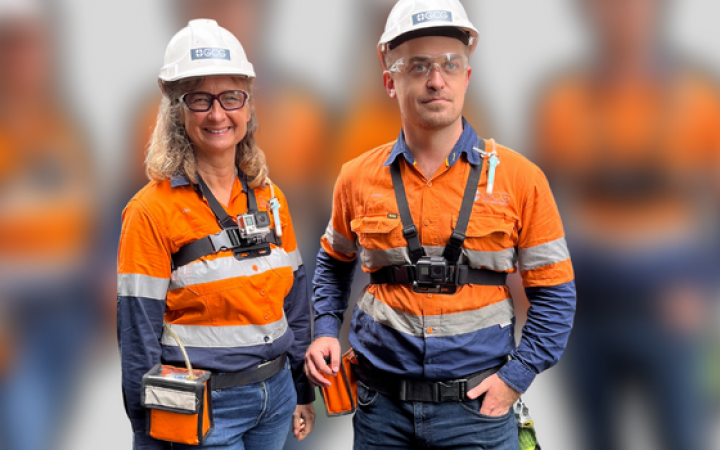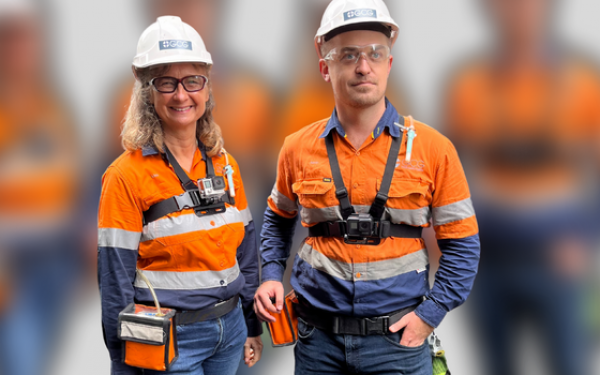Current dust monitoring methods are sound, but are there blind spots?
Managing exposure to airborne dust is of critical importance in today’s workplace. Elevated exposures (primarily to respirable dust and silica) can cause irreversible lung disease and lung cancer. With well over 250,000 people in Australia at risk of potential harm from exposure to airborne dust and the Australian government this year alone investing $11 million in protecting workers from dust disease, it’s clearly a significant and wide reaching problem. Currently, to verify if worker exposures are controlled below the exposure standard, personal exposure sampling is required, which generally involves a worker wearing a monitor over the duration of a shift. Hygienists must interpret sampling data across an entire shift rather than at a task-by-task level. This then produces a single overall exposure result following laboratory analysis. With very little insight into what occurs at task-by-task level, pinpointing specific causes for high exposure is difficult and means potentially harmful exposures may go unseen. Another limitation is that reporting of exposure levels can take up to a month (and provides data ‘after the fact’), hindering timely decisions about dust control measures. This can exacerbate worker harm, as controls cannot be implemented without first analysing the sampling results. These single/per shift results have been universally challenging for health and safety teams, supervisors and workers to translate into meaningful and actionable dust controls. So, although critical at providing an understanding of exposure, traditional sampling methods, which have been guiding critical exposure control decisions for over 40 years, do not provide meaningful and timely information and inhibit the potential to reduce risk.What real-time monitoring does that traditional methods do not
On-person real-time monitoring provides timely, highly repeatable dust measurements on demand. Where traditional personal exposure sampling provides one aggregate result per shift, real-time monitoring provides +28,000 data points. Pairing on-person dust monitoring hardware with real-time on-person task video capture (video exposure monitoring) allows workplaces to visualise previously unseen task-level exposures. This improved delivery of monitoring information provides insight into where and how workers are being exposed to dust, allowing for task-specific dust controls to be implemented, resulting in better control management and less exposure for the workforce.The benefits of insight
Many workplaces experience the common issue of being unable to determine which control or controls are effective, particularly when controls are layered. So, unable to unpack which controls are effective, all controls remain in place, including ineffective controls, which can mean unnecessary cost to industry. Real-time monitoring unlocks the ability to practically validate controls and unpack layered controls. Similarly, another common issue is uncertainty on which aspect of a worker’s activity or environment to control. When you can’t pinpoint where to prioritise controls, the risk owner makes ill-informed decisions on additional controls. Real-time monitoring allows for data driven decisions to prioritise controls. This improves the impact of controls and allows for investment in only the right controls. Regulatory requirements are in place for single sample exceedances from traditional sampling, which has cost implications for businesses. Being able to pinpoint and introduce task specific controls reduces the incidences of single sample exceedances, increasing worker safety and reducing associated exceedance costs.Summary
Real-time monitoring allows workplaces to make informed, faster control decisions:- Exposure visualisation, it provides an innovative solution for visualising exposure to respirable dust and, in turn, clarifying where and how workers are being exposed.
- Real-time results, no waiting weeks. See exposure on a task-by-task basis and in real-time (without the lag time of traditional dust exposure monitoring reporting).
- Rapidly validate existing dust control measures and design, test and implement informed exposure control decisions with confidence and speed.
- Conduct a deeper analysis of task based exposures. Implementing controls for these tasks ultimately results in less exposure for the workforce.
- Identify the effectiveness of controls by examining the risk of exposure pre and post control implementation. This promotes data driven decisions and improves adoption of controls, as workers are now able to visualise the difference in exposure.

